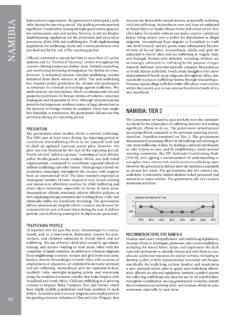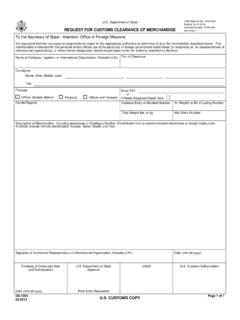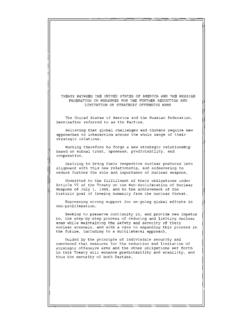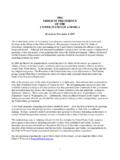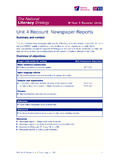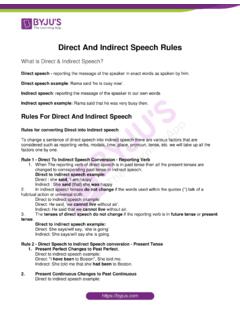Transcription of DIMENSIONS OF CULTURE - United States Department of …
1 02: CULTUREDIMENSIONS OF CULTUREE xploring the DIMENSIONS of CULTURE helps to define what a CULTURE believes and what guides its people including the cultural norms that affect day-to-day interactions. While there are dozens of DIMENSIONS to CULTURE , the following 11 DIMENSIONS are key to the foundations of CULTURE , and understanding them will help you navigate conversations and influence how you respond to difficult dimension is defined by two opposing poles and each CULTURE , as well as each individual in that CULTURE , falls at some point along the spectrum between those two poles. If you re able to map the CULTURE you are entering into across a number of DIMENSIONS , you can obtain a more complete picture of that CULTURE and communicate more SO YOU RE AN AMERICAN?
2 : A GUIDE TO ANSWERING DIFFICULT QUESTIONS ABROAD2 SO YOU RE AN AMERICAN? : A GUIDE TO ANSWERING DIFFICULT QUESTIONS ABROADDIMENSIONS OF CULTUREINDIVIDUALISMCOLLECTIVISMP eople in individualistic cultures have a strong I orientation, and they are more self-focused and self-directed. They tend to make decisions alone and enjoy competition. People in collectivistic cultures have a strong we orientation. They seek and value group identity and attachment. They make decisions as a group and enjoy collaboration. Countries with strong Individualism:Countries with strong Collectivism:How does this play out?
3 How does this play out? United States of America, Australia, NetherlandsJapan, South Korea, Brazil People enjoy creating a unique identity. Nuclear families are the main social unit. Independence and self-reliance are valued. People often prefer to work alone or have autonomy in their actions. Help or advice is sought from professionals outside the group. People desire affiliation with a group. Extended families are the main social unit. Interdependence creates strong social ties. Cooperation and harmony guide team work. Help or advice is sought from others within the cultures believe all people are equal and have equal rights and responsibilities.
4 There is an expectation of equal treatment under the law and for equal opportunities to hierarchical cultures there is an acceptance and expectation that different people have different levels of power and deserve different treatment. This leads to preferential treatment for certain with strong Egalitarianism:Countries with strong Hierarchy:How does this play out?How does this play out? United States of America, Denmark, Finland China, India, Nigeria Employees are self-directed and are encouraged to take initiative. Information tends to flow up and down. Discussion and debate lead to decision making.
5 First names are used early in interactions. Protocols are more informal and relaxed. Employees await direction from their superiors and stay within behavioral norms. Information tends to flow from the top down. Managers make decisions and expect them to be carried out without too much discussion. Titles and last names are used until the relationship has progressed. Protocols are more formal and SO YOU RE AN AMERICAN? : A GUIDE TO ANSWERING DIFFICULT QUESTIONS ABROAD 02: CULTURE4 SO YOU RE AN AMERICAN? : A GUIDE TO ANSWERING DIFFICULT QUESTIONS ABROADDIMENSIONS OF CULTUREDIRECT COMMUNICATIONINDIRECT COMMUNICATIOND irect communication cultures convey information explicitly through descriptions and facts.
6 Language is a tool to share information and accomplish tasks. Feedback and debate are encouraged. indirect communication cultures convey information implicitly through inferences and connections. Language is a means to create meaning and strengthen relationships. Feedback is softened and conflict is avoided. Countries with strong Direct Communication:Countries with strong indirect Communication:How does this play out?How does this play out? United States of America, Germany, Russia Japan, Pakistan People feel free to express their opinion and to disagree. Both honest and direct feedback is given.
7 There is less effort on saving face and more on accomplishing the task. More emphasis is placed on concrete data. People express their opinion and disagree only with those whom they trust. Constructive feedback is given indirectly and sparingly. There is great concern for saving face and maintaining harmony. Context and circumstances greatly influence the COMMUNICATIONFORMAL COMMUNICATIONI nformal communication is characterized by casual interactions with little protocol, few titles, and relatively egalitarian treatment. Formal communication is executed with adherence to protocols, the use of titles, and deferential treatment for superiors.
8 Countries with strong Informal Communication:Countries with strong Formal Communication:How does this play out?How does this play out? United States of America, New Zealand Japan, Arabic-speaking countries, India There is moderate differentiation between speech for family members and esteemed superiors. Language is often instrumental, or used as a tool to convey information and accomplish tasks. Speakers use many common expressions and slang. Informal communication can be spontaneous and freeform. There is careful differentiation between speech for intimates and outsiders or superiors. Language is often expressive, or used to create a mood or tell a story.
9 Speakers use ritualized language to address and discuss various topics with superiors. Official correspondence is often carefully planned in SO YOU RE AN AMERICAN? : A GUIDE TO ANSWERING DIFFICULT QUESTIONS ABROAD 02: CULTURE6 SO YOU RE AN AMERICAN? : A GUIDE TO ANSWERING DIFFICULT QUESTIONS ABROADDIMENSIONS OF CULTUREMONOCHRONICPOLYCHRONICIn monochronic cultures, time is precise, fixed, and scarce. People prefer to work in a linear and sequential fashion. Time is money. In polychronic cultures, time is estimated, fluid, and abundant. Time and tasks may flow in multiple directions simultaneously.
10 Countries with strong Monochronic orientation:Countries with strong Polychronic orientation:How does this play out?How does this play out? United States of America, Germany, Japan Italy, Saudi Arabia, Ghana Punctuality and timeliness are valued and being late is disrespectful. Others adhere to schedules and appointments regardless of the people involved. Tasks and deadlines often take precedence over relationships. People prefer to do one thing at a time. Punctuality is a goal to be attained. Being late may be excused. People adhere to schedules and appointments depending on who is involved.


